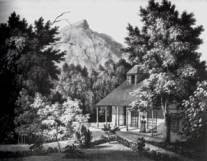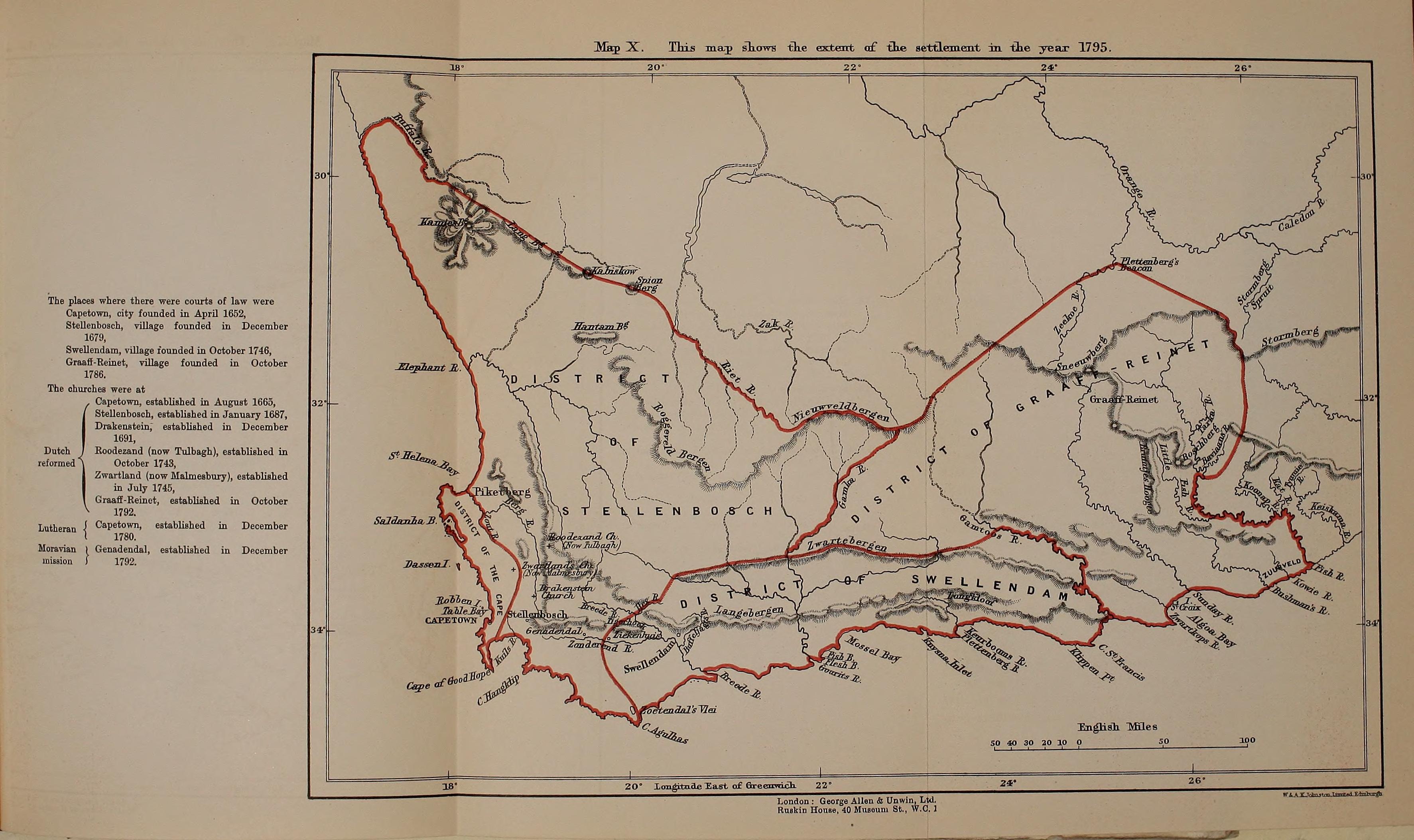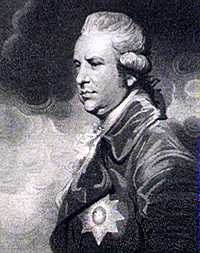|
Charles Anguish
Charles Anguish (13 February 1769 – 25 May 1797) was an English soldier and first-class cricketer in the late 18th century. He was a member of the White Conduit Club and an early member of the Marylebone Cricket Club (MCC). He made his first-class debut during the 1789 season, playing for MCC, and is known to have played in 32 first-class matches from then until 1795, most frequently appearing for MCC sides, as well as a number of other matches for the club. Anguish was born at Bloomsbury in Middlesex in 1767, as a member of the Anguish family which owned land across East Anglia. He was the son of Thomas Anguish, who served as the Accountant-General in the Court of Chancery, and was educated at Eton College and later played cricket for Old Etonians. He was nominated for a place at King's College, Cambridge in 1786 but did not attend the university, instead serving in the British Army. In 1797 Anguish went to South Africa as part of the first British party to control the Cape ... [...More Info...] [...Related Items...] OR: [Wikipedia] [Google] [Baidu] |
Bloomsbury
Bloomsbury is a district in the West End of London. It is considered a fashionable residential area, and is the location of numerous cultural, intellectual, and educational institutions. Bloomsbury is home of the British Museum, the largest museum in the United Kingdom, and several educational institutions, including University College London and a number of other colleges and institutes of the University of London as well as its central headquarters, the New College of the Humanities, the University of Law, the Royal Academy of Dramatic Art, the British Medical Association and many others. Bloomsbury is an intellectual and literary hub for London, as home of world-known Bloomsbury Publishing, publishers of the ''Harry Potter'' series, and namesake of the Bloomsbury Set, a group of British intellectuals which included author Virginia Woolf, biographer Lytton Strachey, and economist John Maynard Keynes. Bloomsbury began to be developed in the 17th century under the Earls of Sout ... [...More Info...] [...Related Items...] OR: [Wikipedia] [Google] [Baidu] |
Court Of Chancery
The Court of Chancery was a court of equity in England and Wales that followed a set of loose rules to avoid a slow pace of change and possible harshness (or "inequity") of the Common law#History, common law. The Chancery had jurisdiction over all matters of equity, including English trusts law, trusts, English property law, land law, the estates of Mental illness, lunatics and the guardianship of infants. Its initial role was somewhat different: as an extension of the lord chancellor's role as Keeper of the King's Conscience, the court was an administrative body primarily concerned with conscientious law. Thus the Court of Chancery had a far greater remit than the common law courts, whose decisions it had the jurisdiction to overrule for much of its existence, and was far more flexible. Until the 19th century, the Court of Chancery could apply a far wider range of remedies than common law courts, such as specific performance and injunctions, and had some power to grant damage ... [...More Info...] [...Related Items...] OR: [Wikipedia] [Google] [Baidu] |
1769 Births
Events January–March * February 2 – Pope Clement XIII dies, the night before preparing an order to dissolve the Jesuits.Denis De Lucca, ''Jesuits and Fortifications: The Contribution of the Jesuits to Military Architecture in the Baroque Age'' (BRILL, 2012) pp315-316 * February 17 – The British House of Commons votes to not allow MP John Wilkes to take his seat after he wins a by-election. * March 4 – Mozart departs Italy, after the last of his three tours there. * March 16 – Louis Antoine de Bougainville returns to Saint-Malo, following a three-year circumnavigation of the world with the ships '' La Boudeuse'' and '' Étoile'', with the loss of only seven out of 330 men; among the members of the expedition is Jeanne Baré, the first woman known to have circumnavigated the globe. She returns to France some time after Bougainville and his ships. April–June * April 13 – James Cook arrives in Tahiti, on the ship HM Bark ' ... [...More Info...] [...Related Items...] OR: [Wikipedia] [Google] [Baidu] |
Castle Of Good Hope
The Castle of Good Hope ( nl, Kasteel de Goede Hoop; af, Kasteel die Goeie Hoop) known locally as the Castle or Cape Town Castle is a bastion fort built in the 17th century in Cape Town, South Africa. Originally located on the coastline of Table Bay, following land reclamation the fort is now located inland.Dirk Teeuwen (2007) ''Kasteel De Goede Hoop, Castle of Good Hope'' In 1936 the Castle was declared a historical monument (now a provincial heritage site) and following restorations in the 1980s it is considered the best preserved example of a Dutch East India Company fort. [...More Info...] [...Related Items...] OR: [Wikipedia] [Google] [Baidu] |
Lady Anne Barnard
Lady Anne Barnard (née Lindsay; 8 December 17506 May 1825) was a Scottish travel writer, artist and socialite, and the author of the ballad ''Auld Robin Gray''. Her five-year residence in Cape Town, South Africa, although brief, had a significant impact on the cultural and social life of the time.''The Claremont Clarion'' (June, 2010) Early life 
 Lady Anne ...
Lady Anne ...
[...More Info...] [...Related Items...] OR: [Wikipedia] [Google] [Baidu] |
The Gentleman's Magazine
''The Gentleman's Magazine'' was a monthly magazine founded in London, England, by Edward Cave in January 1731. It ran uninterrupted for almost 200 years, until 1922. It was the first to use the term ''magazine'' (from the French ''magazine'', meaning "storehouse") for a periodical. Samuel Johnson's first regular employment as a writer was with ''The Gentleman's Magazine''. History The original complete title was ''The Gentleman's Magazine: or, Trader's monthly intelligencer''. Cave's innovation was to create a monthly digest of news and commentary on any topic the educated public might be interested in, from commodity prices to Latin poetry. It carried original content from a stable of regular contributors, as well as extensive quotations and extracts from other periodicals and books. Cave, who edited ''The Gentleman's Magazine'' under the pen name "Sylvanus Urban", was the first to use the term ''magazine'' (meaning "storehouse") for a periodical. Contributions to the magazi ... [...More Info...] [...Related Items...] OR: [Wikipedia] [Google] [Baidu] |
University Of Pennsylvania
The University of Pennsylvania (also known as Penn or UPenn) is a private research university in Philadelphia. It is the fourth-oldest institution of higher education in the United States and is ranked among the highest-regarded universities by numerous organizations and scholars. While the university dates its founding to 1740, it was created by Benjamin Franklin and other Philadelphia citizens in 1749. It is a member of the Ivy League. The university has four undergraduate schools as well as twelve graduate and professional schools. Schools enrolling undergraduates include the College of Arts and Sciences, the School of Engineering and Applied Science, the Wharton School, and the School of Nursing. Among its highly ranked graduate schools are its law school, whose first professor wrote the first draft of the United States Constitution, its medical school, the first in North America, and Wharton, the first collegiate business school. Penn's endowment is US$20.7 billio ... [...More Info...] [...Related Items...] OR: [Wikipedia] [Google] [Baidu] |
South Africa
South Africa, officially the Republic of South Africa (RSA), is the southernmost country in Africa. It is bounded to the south by of coastline that stretch along the South Atlantic and Indian Oceans; to the north by the neighbouring countries of Namibia, Botswana, and Zimbabwe; and to the east and northeast by Mozambique and Eswatini. It also completely enclaves the country Lesotho. It is the southernmost country on the mainland of the Old World, and the second-most populous country located entirely south of the equator, after Tanzania. South Africa is a biodiversity hotspot, with unique biomes, plant and animal life. With over 60 million people, the country is the world's 24th-most populous nation and covers an area of . South Africa has three capital cities, with the executive, judicial and legislative branches of government based in Pretoria, Bloemfontein, and Cape Town respectively. The largest city is Johannesburg. About 80% of the population are Black South Afri ... [...More Info...] [...Related Items...] OR: [Wikipedia] [Google] [Baidu] |
Table Bay
Table Bay (Afrikaans: ''Tafelbaai'') is a natural bay on the Atlantic Ocean overlooked by Cape Town (founded 1652 by Van Riebeeck) and is at the northern end of the Cape Peninsula, which stretches south to the Cape of Good Hope. It was named because it is dominated by the flat-topped Table Mountain. History Bartolomeu Dias was the first European to explore this region in 1486. The bay, although famous for centuries as a haven for ships, is actually a rather poor natural harbour and is exposed to storm waves from the northwest. Many sailing ships seeking refuge in the bay during the 17th and 18th centuries were driven ashore by winter storms. The Dutch colonists nevertheless persisted with their efforts on the shores of Table Bay, because good natural harbours along this coastline are almost non-existent. The best of them, Saldanha Bay, lacked fresh water. Simon's Bay was well protected from westerly winter storms and swells, but more exposed to summer southeasterliy storm ... [...More Info...] [...Related Items...] OR: [Wikipedia] [Google] [Baidu] |
Invasion Of The Cape Colony
The Invasion of the Cape Colony, also known as the Battle of Muizenberg, was a British military expedition launched in 1795 against the Dutch Cape Colony at the Cape of Good Hope. The Dutch colony at the Cape, established and controlled by the United East India Company in the seventeenth century, was at the time the only viable South African port for ships making the journey from Europe to the European colonies in the East Indies. It therefore held vital strategic importance, although it was otherwise economically insignificant. In the winter of 1794, during the French Revolutionary Wars, French troops entered the Dutch Republic, which was reformed into the Batavian Republic. In response, Great Britain launched operations against the Dutch Empire to use its facilities against the French Navy. The British expedition was led by Vice-Admiral Sir George Keith Elphinstone and sailed in April 1795, arriving off Simon's Town at the Cape in June. Attempts were made to negotiate a ... [...More Info...] [...Related Items...] OR: [Wikipedia] [Google] [Baidu] |
George Macartney, 1st Earl Macartney
:''George Macartney should not be confused with Sir George Macartney, a later British statesman.'' George McCartney, 1st Earl McCartney (14 May 1737 – 31 May 1806), also spelt Macartney, was an Anglo-Irish statesman, colonial administrator and diplomat who served as the governor of Grenada, Madras and the British-occupied Cape Colony. He is often remembered for his observation following Britain's victory in the Seven Years' War and subsequent territorial expansion at the Treaty of Paris that Britain now controlled " a vast Empire, on which the sun never sets". Early years He was born in 1737 as the only son of George McCartney, High Sheriff of Antrim and Elizabeth Winder. Macartney descended from a Scottish branch of the McCartney family whose ancestors originated in Ireland and were granted land in Scotland for serving under Edward Bruce, Robert the Bruce's brother. The Macartneys of Auchenleck, Kirkcudbrightshire settled in Lissanoure County Antrim, Ireland, where he w ... [...More Info...] [...Related Items...] OR: [Wikipedia] [Google] [Baidu] |
Google Books
Google Books (previously known as Google Book Search, Google Print, and by its code-name Project Ocean) is a service from Google Inc. that searches the full text of books and magazines that Google has scanned, converted to text using optical character recognition (OCR), and stored in its digital database.The basic Google book link is found at: https://books.google.com/ . The "advanced" interface allowing more specific searches is found at: https://books.google.com/advanced_book_search Books are provided either by publishers and authors through the Google Books Partner Program, or by Google's library partners through the Library Project. Additionally, Google has partnered with a number of magazine publishers to digitize their archives. The Publisher Program was first known as Google Print when it was introduced at the Frankfurt Book Fair in October 2004. The Google Books Library Project, which scans works in the collections of library partners and adds them to the digital invent ... [...More Info...] [...Related Items...] OR: [Wikipedia] [Google] [Baidu] |








